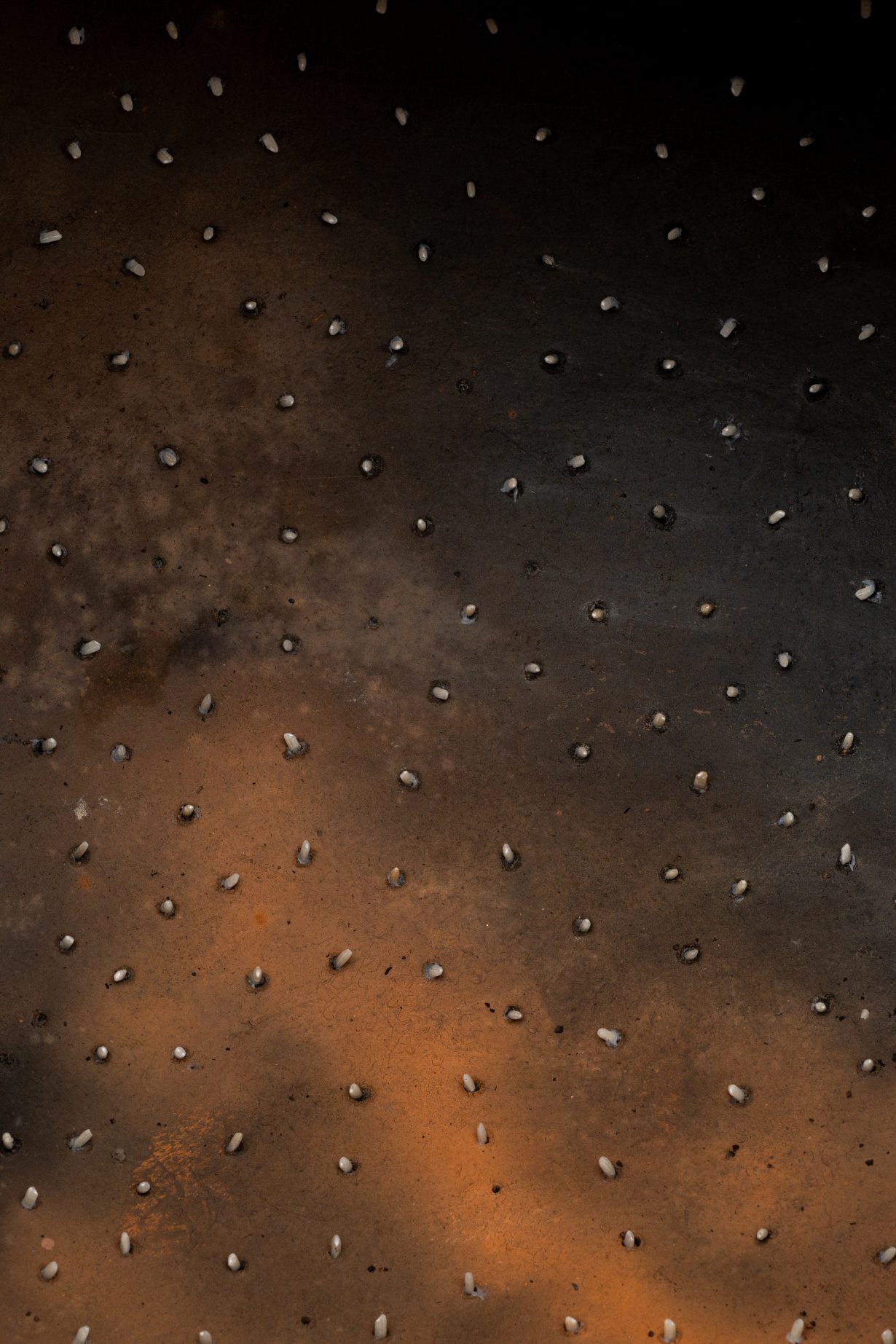In Inventing the Rest at Maximillian William, London, three artists use the material to bridge between the temporal poles of the future and the past
In this three-person show, Anina Major, Andrés Monzón-Aguirre and Adebunmi Gbadebo use clay to bridge between the temporal poles of the future and the past. Each artist has a different method of referencing history – personal, communal or natural – and then expressing its importance as time inevitably progresses. The works also have a strong sense of place. Each draws on a unique element of the locations where their stories are set: from the origins of materials used, to depictions of local fauna. By going on the journeys these objects offer, we can gain clarity about our own timelines.
Gbadebo’s pots, with their smooth bulging bodies and imperfect surfaces, were created with clay, animal bones and rice all originating from the True Blue in South Carolina, a former plantation where her ancestors are buried in the cemetery. Some of them were slaves who worked on the site’s plantation to harvest rice, till the soil (from which her clay derives) and work alongside animals. The history of the materials in Gbadebo’s works underscores their capacity beyond serving as physical containers. They hold space for reapproaching her family’s ongoing relationship to the land their predecessors were forced to work and inhabit – and by extension those of others descended from enslaved Africans. In doing this on her own terms, instead of in relation to an external narrative, perhaps some peace with this painful past can be reached.

Major’s ceramics initially appear more abstract, but their plaited strips of clay reference forms of straw weaving created by local artisans to sell to tourists in her native Bahamas. The basket-like forms are completed by a cluster of cylindrical fingers, which resemble the wires used to give straw woven materials form and cascade from a central point like an umbrella. Their shape enhances the suggestion that these objects are designed to shield what is contained within them from whatever is without. By recreating straw-work in clay, she adds weight, literally and figuratively, to this practice. In the process, she asserts that despite straw’s ubiquity and inexpensiveness, these techniques of manipulating it, which date back to the island’s indigenous Arawak peoples, are precious and worth preserving beyond the tourist trade.

Colombian artist Monzón-Aguirre’s two works titled Égida (Jaguar) and Égida (Gallina Ciega) (both 2023), which translates as ‘aegis’ or protection, depict endangered animals from the artist’s homeland: the jaguar and nightjar. Both glazed stoneware works have three identical animal heads, evoking gargoyles whose functional and symbolic purpose is to protect. However, they don’t have the spouts that give gargoyles their usual architectural function. Instead, they remind viewers of our duty to preserve the creatures and environment alongside which humans exist.
In their explorations of the past, these artists’ works reflect on loss. For Gbadebo, it is the deep, multi-faceted void left by slavery – knowledge, lives, freedom. Major considers the loss of cultural practices outside of commercial incentive and Monzón-Aguirre reflects on the existential threat of extinction. Yet, ultimately, these artworks are reminders to preserve and protect for the future, all moulded in a material perfectly suited to the task.
Inventing the Rest: New Adventures in Clay at Maximillian William, London, 29 June – 14 September
